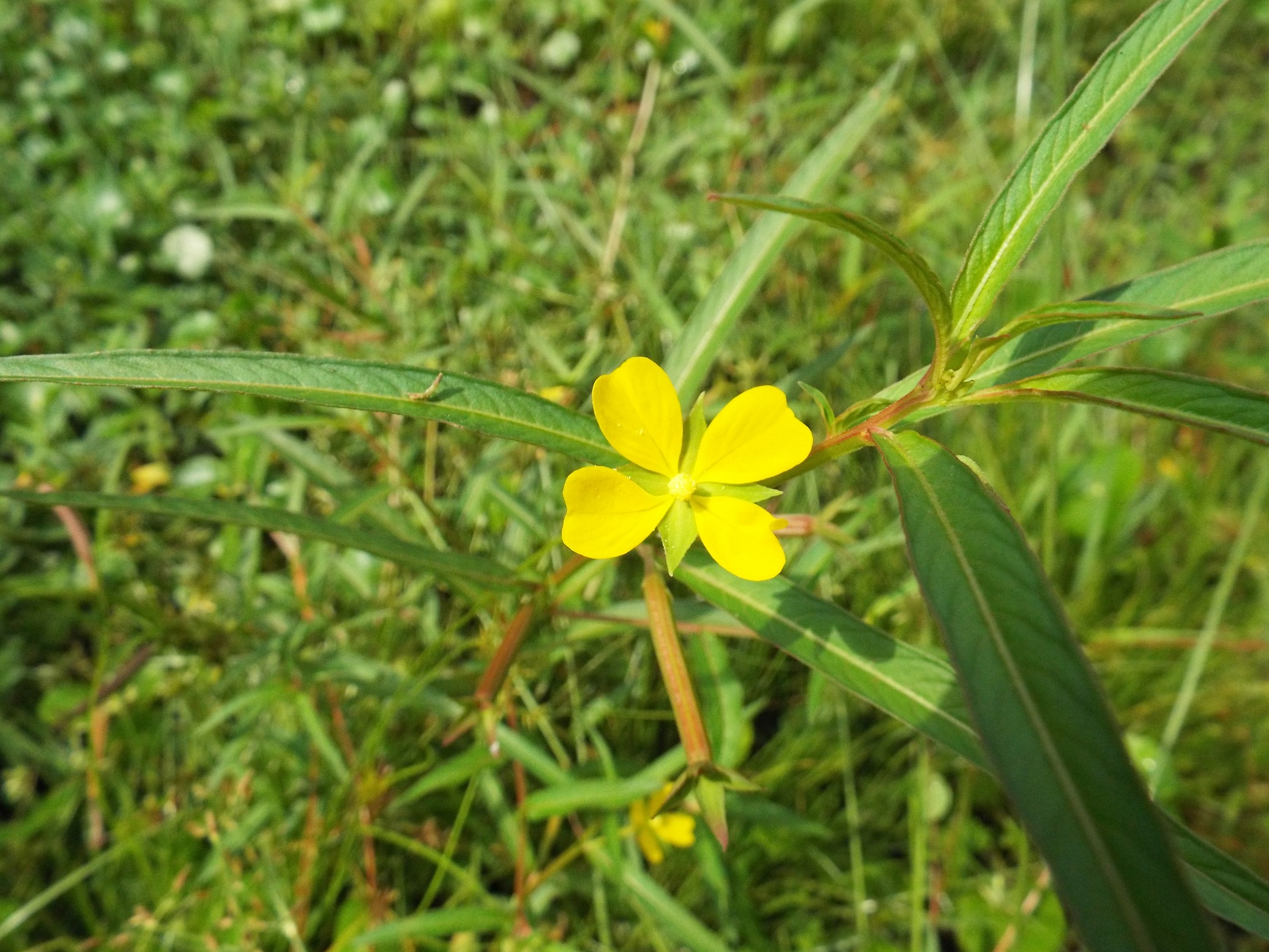
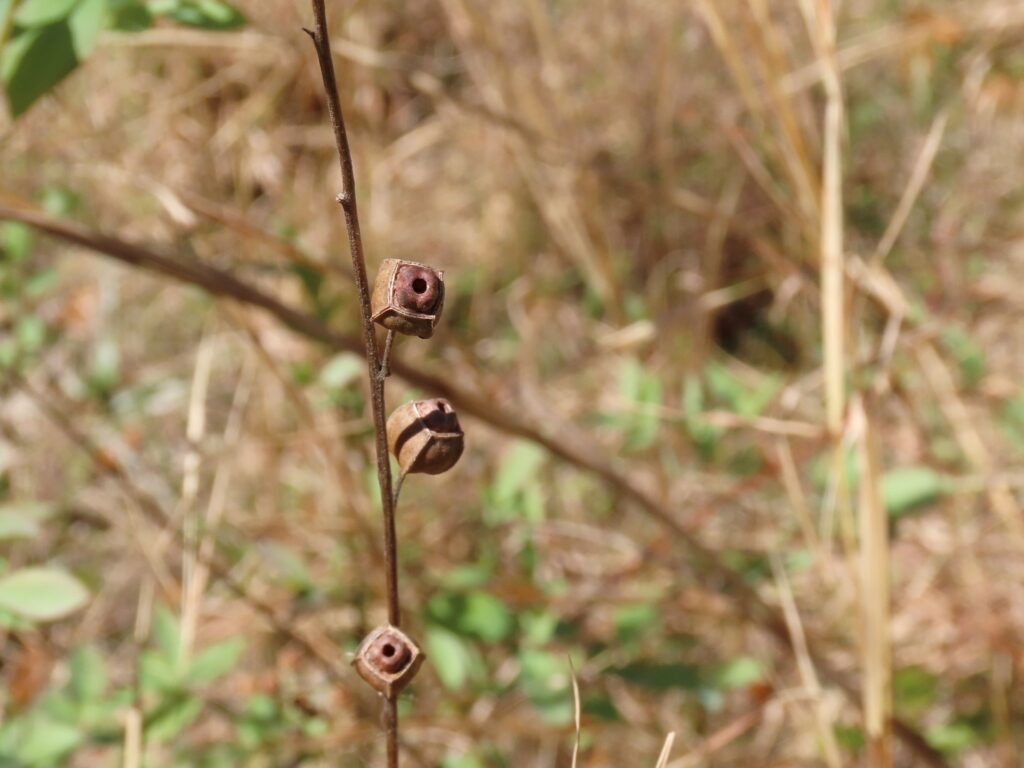
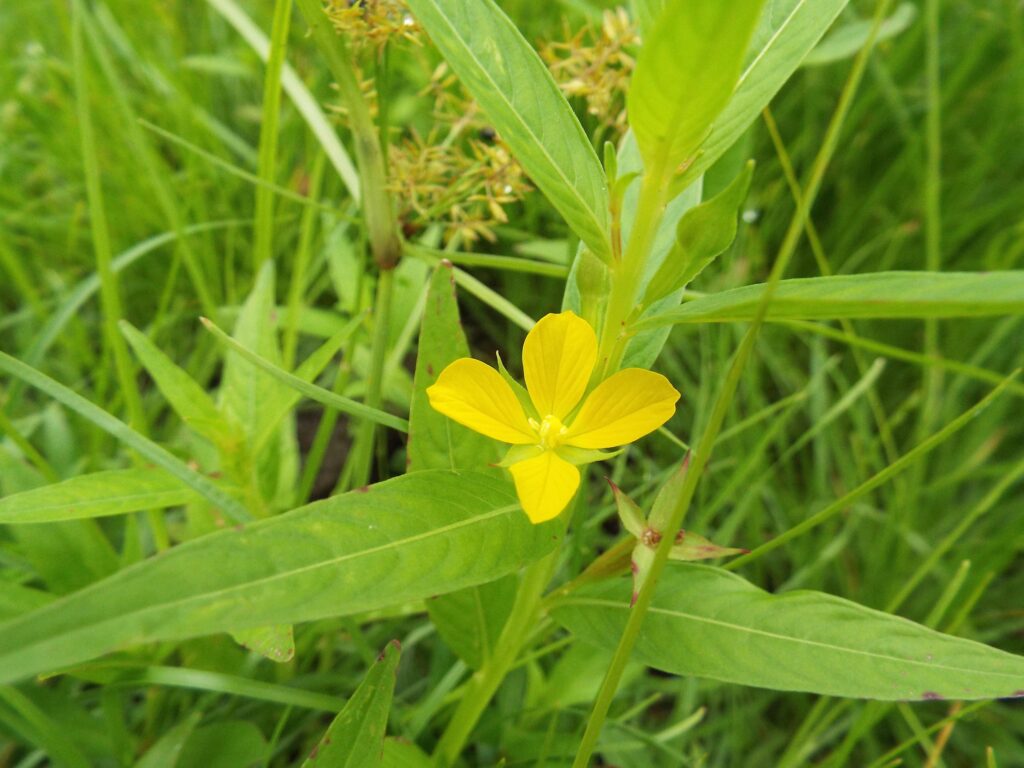
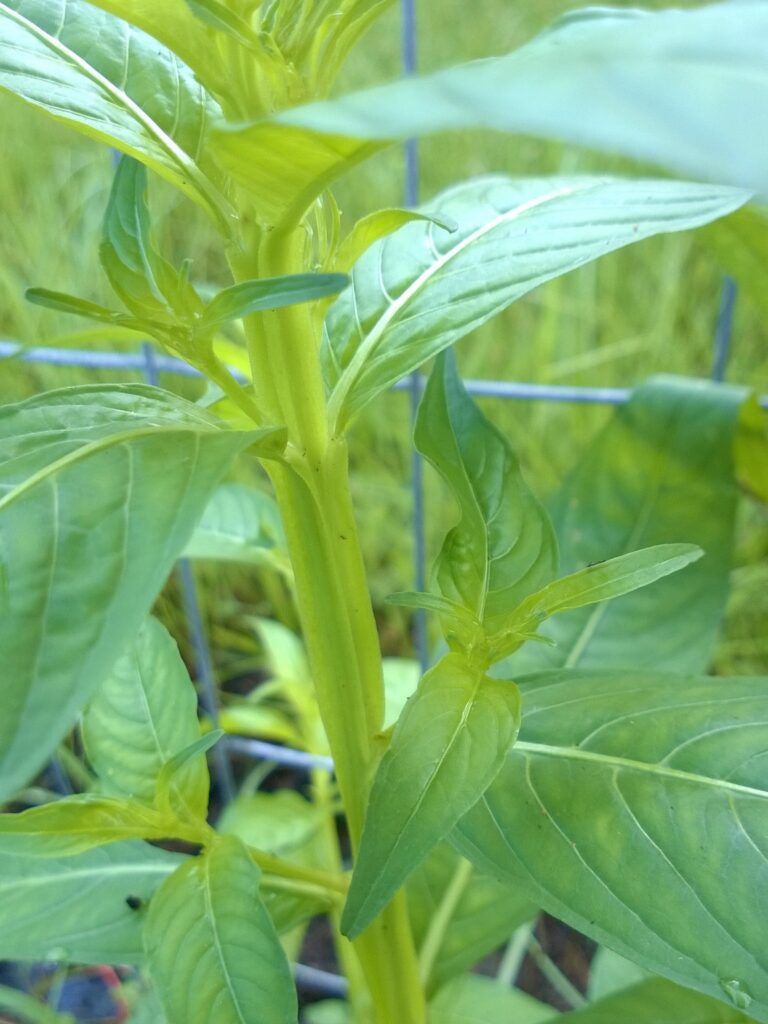
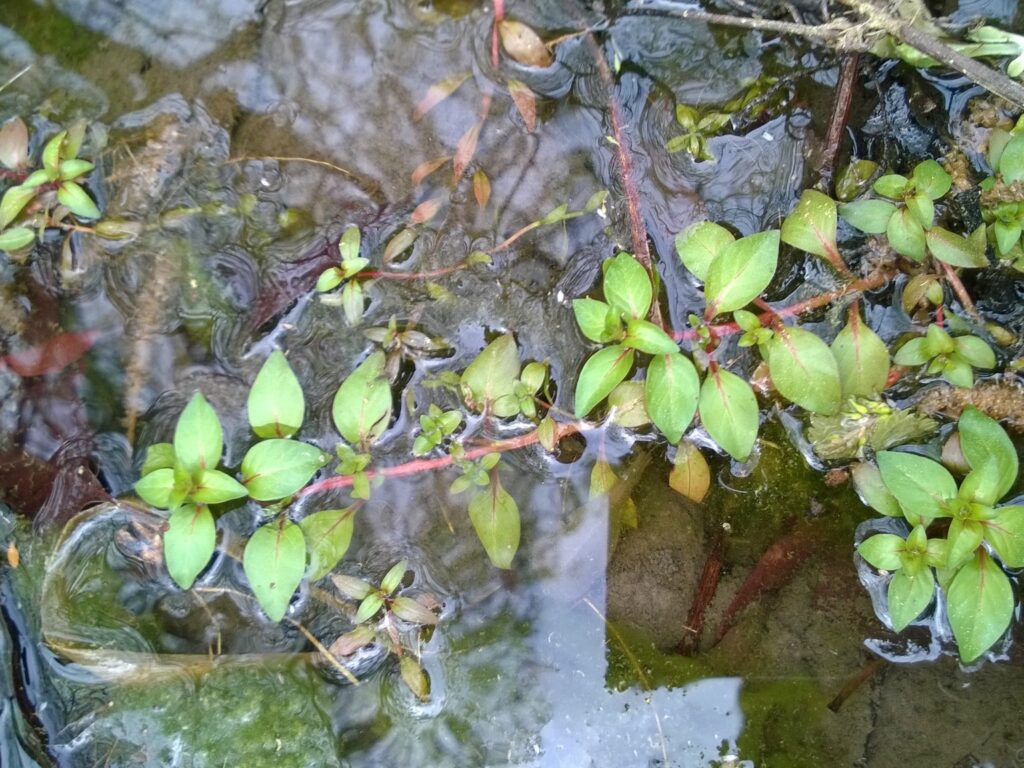
This week for Flora and Fauna Friday, we have a common denizen of ditches and pond edges, the Primrose-Willows of genus Ludwigia.
Primrose-Willows, AKA Water-Primroses, are a group of predominantly small wetland shrubs which are widespread throughout the Eastern United States. In South Carolina we have roughly sixteen abundant species. I’m going to focus on the three I think you’ll be most likely to see: Seedbox (L. alternifolia), Wingleaf Primrose-Willow (L. decurrens), and Water-Purslane (L. palustris).
Seedbox is often found in sunny ditches, pond edges, and freshwater marshes. It grows about three feet in height and forms small, airy bushes. It has a narrow, smooth stem that is often reddish in color. Its leaves are alternate and simple, pointed, and elongate with a pale vein down the center. The flower is four-petalled and lemon-yellow with nearly heart-shaped petals. The calyx of leaves beneath the petals is practically square on its perimeter, with its points situated between the petals. The most distinctive feature of Seedbox, and where it gets that common name, is its dry capsule fruit. This capsule takes on an almost cubic shape, with a square top and seams between its gently bowing sides.
Wingleaf Primrose-Willow is superficially similar to Seedbox in size and shape and is found in much the same habitats. However, Wingleaf Primrose-Willow prefers wetter feet and can grow in more saturated soils. It also grows straighter and less like a bush, its leaves have a corrugated character, and its stems are thicker, green, and often have wings running down from each leaf. The fruit of Wingleaf Primrose-Willow is very different in appearance from Seedbox, having an elongated rectangular shape and prominent ridges at each corner.
Water-Purslane is very different than the other two. It commonly grows as a creeping groundcover on pond and freshwater marsh edges but also as an emergent wetland plant in shallow water. It has somewhat spoon-shaped, alternate leaves often with a prominent pinkish-red vein and fleshy, burgundy stems. Its flowers are tiny and butter-yellow with petals shaped similarly to its leaves.